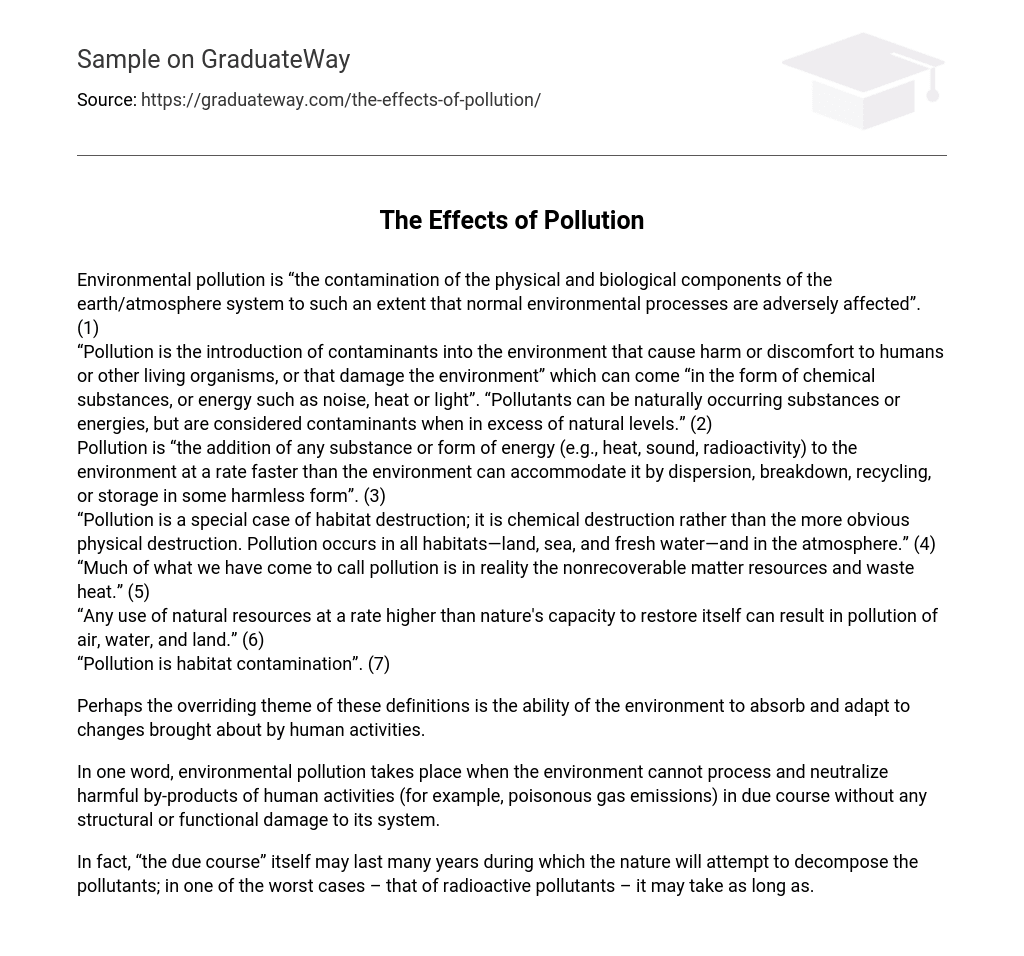Environmental pollution is the contamination of the physical and biological elements of the earth/atmosphere system in a way that adversely affects normal environmental processes. Pollution can occur through introducing contaminants into the environment, which harm or discomfort humans, other living organisms, and damage the environment. These contaminants can be chemical substances or energy like noise, heat, or light. Pollutants exceeding natural levels are considered contaminants even if they occur naturally. Pollution is defined as adding any substance or form of energy to the environment faster than it can handle through dispersion, breakdown, recycling, or storage in a harmless form. It’s important to note that pollution is a special case of habitat destruction and occurs in various habitats – land, sea, fresh water, and atmosphere. Some instances we commonly call pollution are actually non-recoverable waste matter resources and waste heat. Utilizing natural resources at a rate higher than nature’s capacity to restore itself results in air, water, and land pollution. Ultimately, pollution contaminates habitats.
The primary focus of these definitions revolves around the environment’s ability to absorb and adapt to changes brought about by human activities.
Environmental pollution happens when the environment is unable to effectively process and eliminate harmful by-products of human activities, like toxic gas emissions, without causing structural or functional harm to its system.
The process of “the due course” can be lengthy, lasting for many years as nature works to break down pollutants. In severe instances, like with radioactive pollutants, the decomposition process may require an extensive amount of time.





